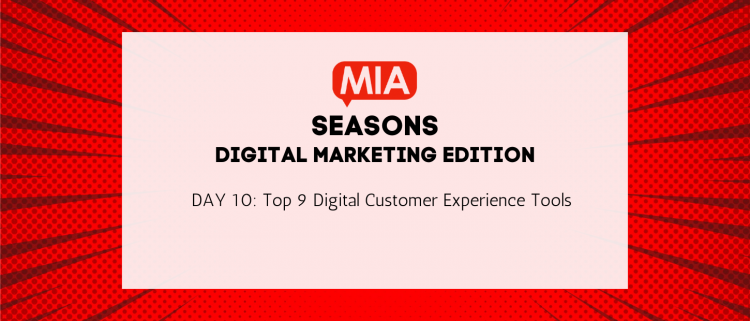Customer experience is a crucial driver of success in the digital era. The goal of customer experience is to create positive customer relations and increase loyalty.
To achieve this, companies need to take care of their customers in three focal areas – engagement, satisfaction, and loyalty. CX strategy should be visible throughout the entire customer journey, including interactions with employees and frontline partners.
Digital businesses need to make sure that they prioritize the customer experience. This will help them in attaining fast growth and increased revenue. With digital customer experience tools, businesses can transform their customer interactions into digital experiences. This allows them to provide a more personalized and targeted experience with little to no effort.
Businesses that want to improve customer experience can focus on the combination of these nine tools.
1. Customer Relationship Management (CRM) Platforms
With the shift towards the digital age, the CRM platform has become an essential tool for businesses as it helps them manage everything from sales to new customer acquisition. A CRM system usually consists of software applications to track and automate customer data and processes, including new customer acquisition, sales, and marketing.
2. Customer Journey Management Software
The customer journey management software helps companies to manage the customer journey. Different functionalities allow companies to take an in-depth look into the customer’s experience with their products and services. Some companies are finding this tool useful to their marketing strategy as well. For example, it can be used for segmentation, targeting, retention, referral tracking, etc.
3. Social Media Tools
Social media tools can help brands to create, manage and publish content. Social media software can be used in various ways for marketing purposes. It can help marketers build credibility with their audience and engage in conversations about their products or services. Social media software also enables businesses to see what their audience is saying and respond in real-time to specific posts that they deem important enough.
4. Customer Feedback Management Tools
Customers are essential to any successful company, and customer feedback is one of the most valuable sources of information for companies. It helps with gauging what your clients want and need so you can improve on it in the future. A customer feedback management tool collects feedback from customers and turns it into actionable insights.
5. Customer Experience Management Platforms
Customer experience management systems help manage your interactions with customers. They help both current & potential customers have a positive customer experience. Today’s customers have a lot of barriers when it comes to interacting with companies or brands. This means that companies need to provide a customer-first experience at every interaction. Providing value when they engage is an important aspect of delivering a better customer experience in today’s market.
6. Customer Engagement Platforms
Customer engagement platforms are becoming increasingly popular. Customer engagement platforms help brands stay in touch with their customers and provide them with a personalized experience. The more engaged the customer, the better the brand can retain them and build brand loyalty.
7. Helpdesk Platforms
Helpdesk platforms provide a central database of all customer support interactions. It makes it easier to stay organized and also helps employees respond quickly to customers in need. Integrated with CRM platforms, new helpdesk tools keep track of customer satisfaction individually and allow for real-time responses to customer questions.
8. Personalization Platforms
Personalization platforms are based on data-driven insights about individuals, demographics, and location. It can be used to identify patterns of behaviors for each user and keep them engaged with what they need to know.
These platforms are typically integrated with an e-commerce site to help it improve product recommendations based on customer preferences.
Personalization is also an effective strategy for capturing new customers because the system ensures that the personalized content is relevant to each person’s needs and background.
9. Post Purchase Platforms
The post-purchase platform is an online platform that helps companies communicate with their customers after they have purchased on their website or app. Post-purchase platforms make the customer’s journey with their purchase more interactive by providing them with details such as delivery tracking and updates on their shipments via email, push and text messages.
The following are some of the most important considerations for marketers when they choose a digital customer experience tool:
- How will the tool integrate with other tools used by your business?
- What is the cost of using it?
- What is the cost of integrating data into it?
- Can you customize it to your needs?
It would be best to consider all the factors before choosing the right tool for your digital customer experience. Consideration includes cost, integration, agility, and scalability. For example, the larger companies with bigger budgets may want an integrated solution that gathers data from multiple sources into one central repository.
The smaller companies need to look for tools that are affordable and can keep up with their growth.
You may also read: How Many Main Pillars Of Digital Marketing
















